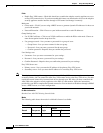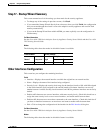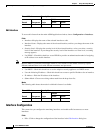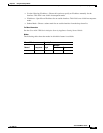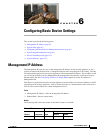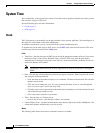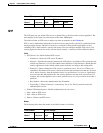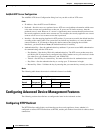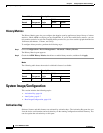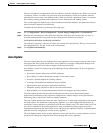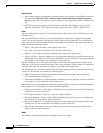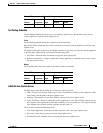
6-2
Cisco ASDM User Guide
OL-16647-01
Chapter 6 Configuring Basic Device Settings
System Time
System Time
You can manually set the system date or time or have the security appliance dynamically set the system
date and tim e using an NTP server.
See the following topics for more information:
• Clock, page 6-2
• NTP, page 6-3
Clock
The Clock pane lets you manually set the date and time for the security appliance. The time displays in
the status bar at the bottom of the main ASDM pane.
In multiple context mode, you can set the time in the system configuration only.
To dynamically set the time using an NTP server, see the NTP pane; time derived from an NTP server
overrides any time set manually in the Clock pane.
Fields
• Time Zone—Sets the time zone as GMT plus or minus the appropriate number of hours. If you select
the Eastern Time, Central Time, Mountain Time, or Pacific Time zone, then the time adjusts
automatically for daylight savings time, from 2:00 a.m. on the second Sunday in March to 2:00 a.m.
on the first Sunday in November.
Note Changing the time zone on the security appliance may drop the connection to intelligent
SSMs.
• Date—Sets the date. Click the Date drop-down list to display a calendar. Then navigate to the correct
date using the following methods:
–
Click the name of the month to display a list of months. Click the desired month. The calendar
updates to that month.
–
Click the year to change the year. You can use the up and down arrows to scroll through the
years, or you can type a year in the entry field.
–
Click the arrows to the right and left of the month and year display to scroll the calendar forward
and backwards one month at a time.
–
Click a day on the calendar to set the date.
• Time—Sets the time on a 24-hour clock.
–
hh, mm, and ss boxes—Sets the hour, minutes, and seconds.
• Update Display Time—Updates the time shown in the bottom right corner of the ASDM pane. The
current time updates automatically every ten seconds.
Modes
The following table shows the modes in which this feature is available:



